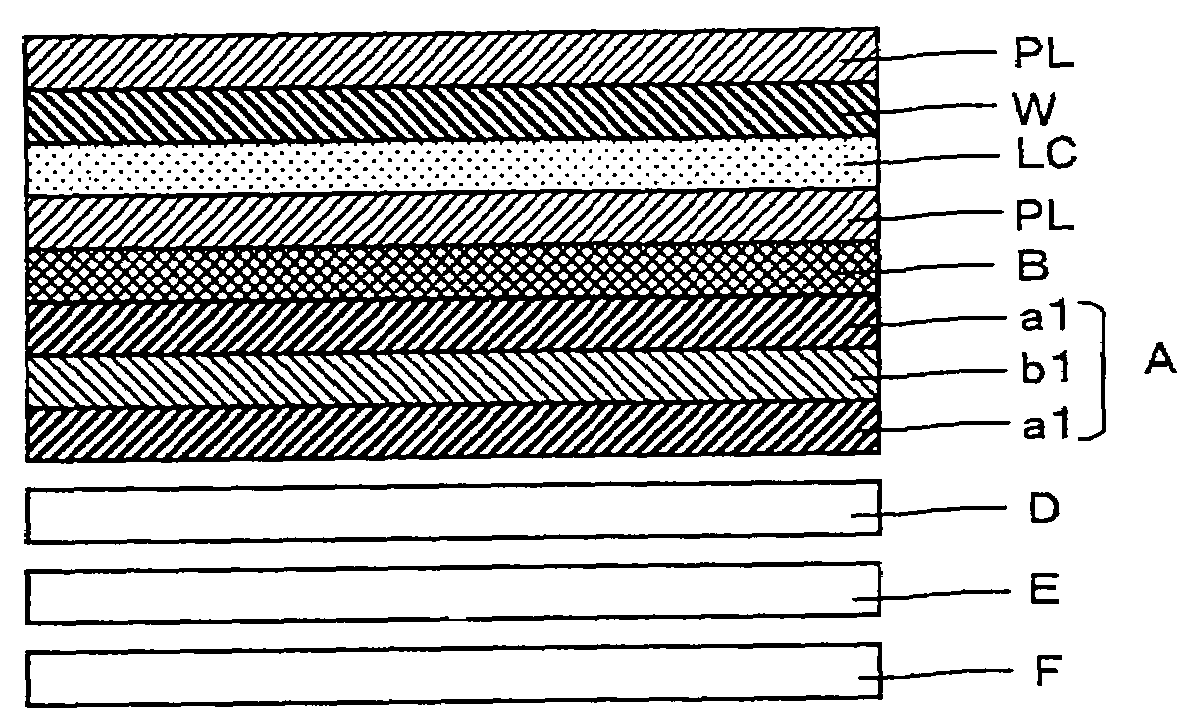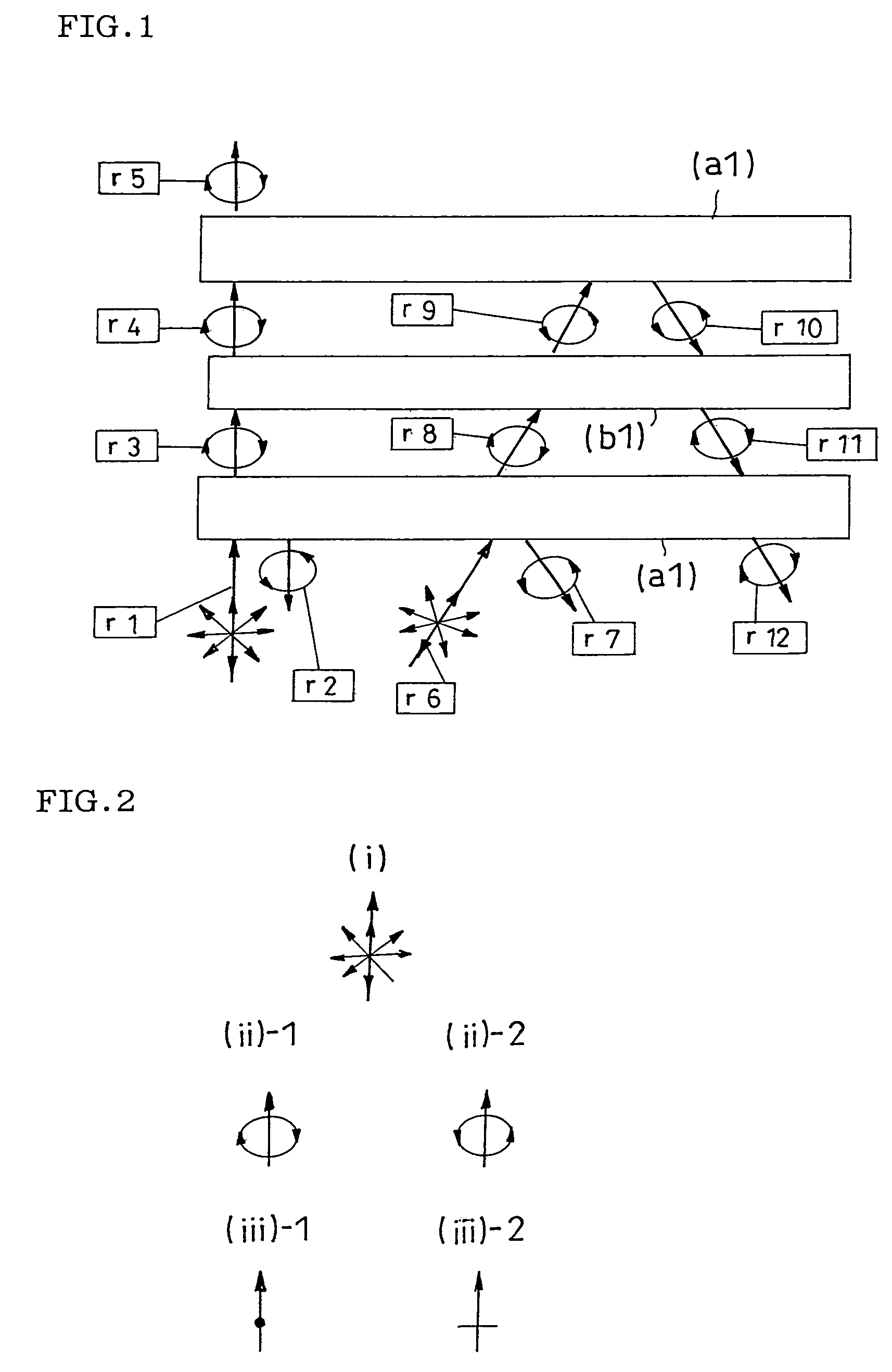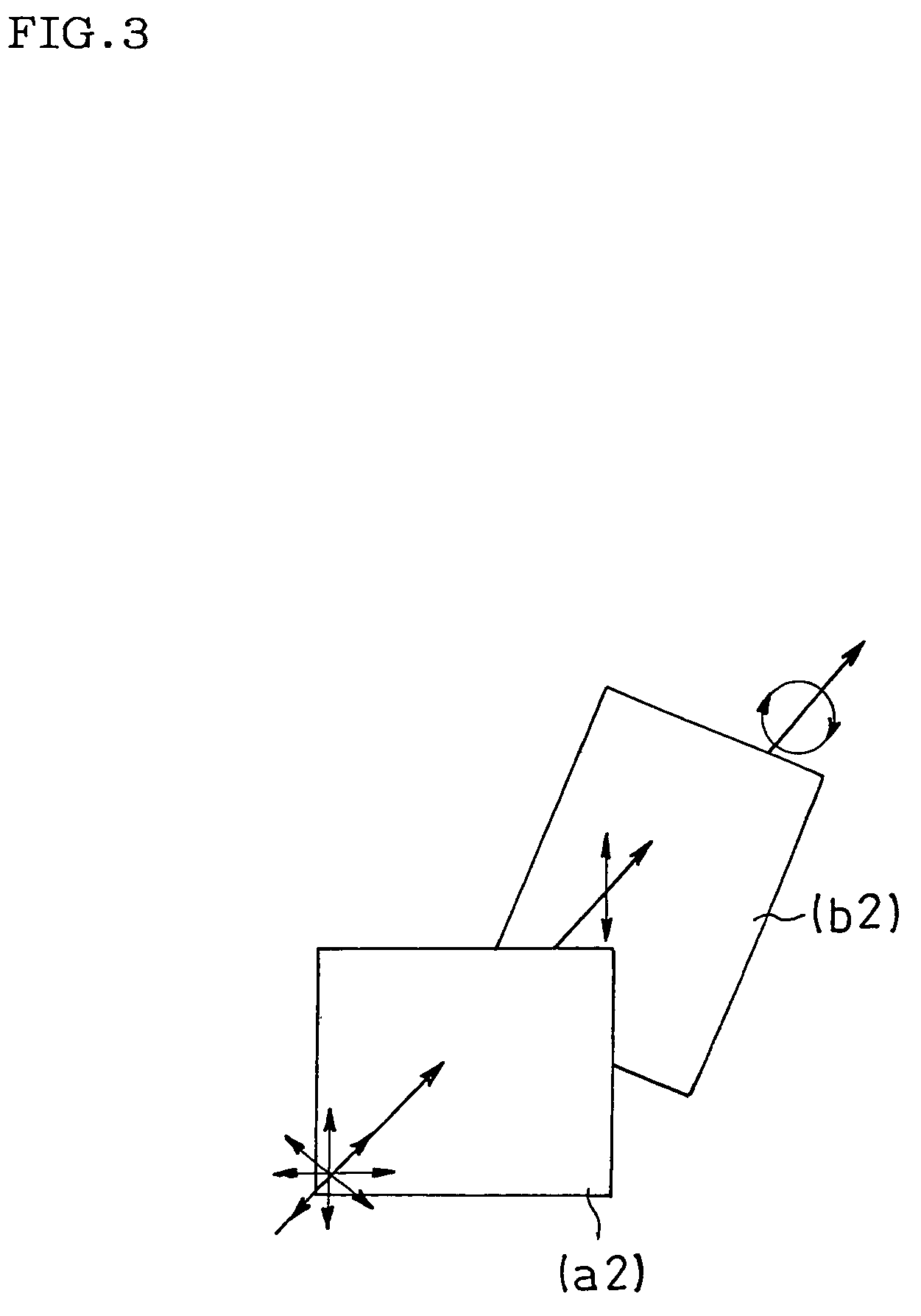Viewing angle magnification liquid crystal display unit
a liquid crystal display and magnification technology, applied in the field of viewing angle magnification liquid crystal display, can solve the problems of poor light utilization efficiency, high cost, poor color reproducibility, etc., and achieve the effects of high contrast, good display quality, and good color reproducibility
- Summary
- Abstract
- Description
- Claims
- Application Information
AI Technical Summary
Benefits of technology
Problems solved by technology
Method used
Image
Examples
example 1
(Preparation of Circular Polarization Type Reflection Polarizer (a1))
[0292]The circular polarization type reflection polarizer (a1) was prepared with a polymerizable nematic liquid crystal monomer and a chiral agent sold on the market. A used cholesteric liquid crystal was obtained from a mixture of a polymerizable mesogen compound and a polymerizable chiral agent, wherein LC242 manufactured by BASF Japan Ltd. was used as the polymerizable mesogen compound, and LC756 manufactured by BASF Japan Ltd. was used as the polymerizable chiral agent.
[0293]The polymerizable mesogen compound and the polymerizable chiral agent were mixed in a mixing ratio of 5 to 95 in weight ratio so that a central wavelength in selective reflection of an obtainable cholesteric liquid crystal was about 550 nm. The obtained cholesteric liquid crystal had a central wavelength in selective reflection was 545 nm and a selective reflection wavelength bandwidth was about 60 nm.
[0294]A detailed method was as follows:...
example 2
(Preparation of Positive C Plate)
[0307]A retardation layer (b1 as a positive C plate) having a front retardation of O and a retardation in an oblique direction of a value was prepared with a polymerized liquid crystal. Used as a polymerizable liquid crystal compound was a polymerizable nematic liquid crystal monomer A expressed by the following chemical formula 1:
[0308]
[0309]A detailed method was as follows. The polymerizable nematic liquid crystal monomer A was dissolved in cyclopentane (at 30 wt %) and a reaction initiator (IRGACURE 907 manufactured by Ciba Specialty Chemicals. at 1 wt % relative to the monomer A) was added to the monomer A to prepare a solution. An vertical alignment film in use was formed by coating a cyclohexane solution (at 0.1 wt %) of a release agent (octadecyltrimethoxysilane) on a polyethylene terephthalate film: LUMIRROR (a thickness of 75 μm) manufactured by TORAY INDUSTRIES INC. to dry the coat.
[0310]The polymerizable nematic liquid crystal monomer A so...
example 3
(Preparation of Linear Polarization Type Reflection Polarizer (a2))
[0313]A multilayer film with 20 layers was obtained by alternately controlling thicknesses of thin films with a feed block method so that polyethylene naphthalate (PEN) / naphthalene dicarboxylate-terephthalate copolyester (co-PEN) were alternately laminated. The multilayer film was uniaxially stretched. A stretching temperature was about 140° C. and a stretch ratio was about threefold in the TD direction. A thickness of each of thin layers in the obtained stretched film was roughly on the order of 0.1 μm. Five stretched films of the obtained 20 layer laminate films were further laminated into a five composite layer laminate including 100 layers in total, thereby obtaining the linear polarization type reflection polarizer (a2). The linear polarization type reflection polarizer (a2) had a reflection function exerted on linearly polarized light in a wavelength band of 500 nm or more and 600 nm or less.
(Preparation of Pol...
PUM
| Property | Measurement | Unit |
|---|---|---|
| wavelength range | aaaaa | aaaaa |
| angle | aaaaa | aaaaa |
| angle | aaaaa | aaaaa |
Abstract
Description
Claims
Application Information
 Login to View More
Login to View More - R&D
- Intellectual Property
- Life Sciences
- Materials
- Tech Scout
- Unparalleled Data Quality
- Higher Quality Content
- 60% Fewer Hallucinations
Browse by: Latest US Patents, China's latest patents, Technical Efficacy Thesaurus, Application Domain, Technology Topic, Popular Technical Reports.
© 2025 PatSnap. All rights reserved.Legal|Privacy policy|Modern Slavery Act Transparency Statement|Sitemap|About US| Contact US: help@patsnap.com



